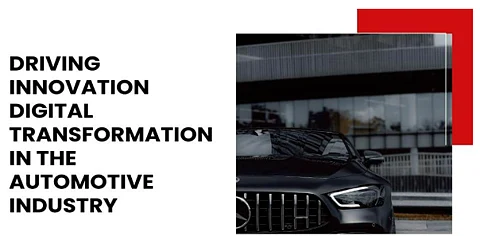

In this new age, the automotive industry is witnessing a paradigm shift as it adopts digital transformation to improve customer experience, process operations, and business models. Gaurav Gupta, a researcher in digital technologies, studies how innovations like IoT integration, data analytics, and AI-driven customer engagement are transforming the sector. His work throws light on the key technologies driving efficiency, customer satisfaction, and new revenue streams in the automotive industry and underlines the importance of staying ahead in a competitive landscape. Those changes not only reshaped how vehicles are designed and manufactured but also how they connect with their users. Shift to smart, connected mobility solutions served to grow the need for much more innovation to meet the needs of modern consumer expectations.
New-generation vehicles are indeed data-platforms that process 20 GB of data per hour of driving. Sensors ranging from 70 to 100, equipped on each vehicle, offer real-time diagnostics, with fault detection accuracy standing at 96%. V2X communication forms the basis for better safety and optimized traffic, with critical application latencies that can reach as low as 50 ms. Edge computing has made it possible for automotive systems to execute 60% of decisions locally, thereby lessening the dependency on cloud and faster responses. These developments assure vehicles to be safer, smarter, and more responsive than ever before.
The integration of advanced analytics has allowed manufacturers to manage an average of 1.6 TB of yearly data per vehicle. Distributed computing architectures maintain 99.99% uptime; it can process 1,000 events per second per vehicle, with predictive maintenance models reaching a 94% score. The results were supply chain visibility up by 42%, unplanned downtime reduced to 35%, and time-to-market improvements for new features at 31%. This transformation enables manufacturers to be responsive to making data-driven decisions that improve operational efficiency and profitability.
Virtual showrooms have transformed customer engagement, cutting sales cycle times by 34%. Augmented reality visualization tools, featuring 0.5mm precision in tracking, drive a 38% increase in conversions. These platforms enable all customers to see options for personalizing vehicles in real time. These systems provide full-immersion demonstrations through VR systems with 6 degrees of freedom and sub-20ms latency. These innovations bring personalized and engaging experiences between online and in-person customer interface.
AI-powered customer support systems utilize transformer-based NLP models with over 175 billion parameters, processing natural language queries with 94% accuracy. Sentiment analysis tools manage 100,000 interactions daily, achieving 88% emotion detection accuracy. Integrated knowledge graphs enhance response times, delivering contextual solutions within 200ms. These innovations have improved customer satisfaction scores by 56% and feature adoption rates by 41%. AI-based solutions also give predictive insights that allow businesses to foresee customer needs and deliver tailored experiences, thereby developing greater brand loyalty and engagement.
Given the fact that a vehicle generates 1.6TB to 2.1TB of data every day, cybersecurity has emerged as an imperative. Quantum-resistant security through AES-256 and elliptic curve cryptography can be achieved while still maintaining authentication latency under 3ms. Privacy frameworks rely on differential privacy techniques and pseudonym changes to ensure robust data protection without sacrificing data utility. Real-time consent management systems process 72,000 consent changes per hour with 99.99% accuracy, ensuring compliance across multiple jurisdictions. Together, these measures protect sensitive customer data, foster trust in connected vehicle systems, and support the industry's commitment to security and privacy.
Further technologies to be transformed by blockchain and AI are going to be those of the automobile industry. Blockchain systems allow safe vehicle history tracking with immutable ledgers processing 1,200 transactions per second. Advanced neural networks with 300 million parameters support autonomous vehicle features, with inference times below 10ms on edge devices. Cloud-native architectures, powered by microservices, process 15 billion API requests monthly with 100% availability. Additionally, these advancements enable seamless integration across systems, fostering enhanced scalability, reliability, and innovation in automotive ecosystems while reducing operational complexities.
In conclusion, Gaurav Gupta highlights the transformative impact of digital technologies on the automotive industry. By integrating IoT, data analytics, AI, and advanced security frameworks, manufacturers are enhancing customer experiences, optimizing operations, and unlocking new revenue streams. As the sector embraces emerging technologies like blockchain and quantum computing, digital transformation will continue to drive innovation and redefine the future of mobility. Organizations that prioritize digital innovation will be better positioned to thrive in this rapidly evolving landscape. Continued investment in these technologies will also ensure long-term sustainability and adaptability in a fast-changing global market.
